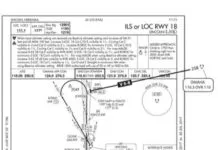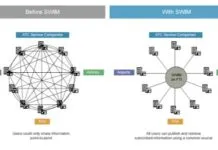On The Air: June 2018
I was flying from Jacksonville, North Carolina to College Park, Maryland on an IFR flight plan to go to a Redskins game. It was a CAVU day. The following exchange took place somewhere southeast of Richmond:Washington Center: Skyhawk 68E, traffic two oclock, 10 miles, westbound, 500 feet above.Skyhawk 68E: Negative contact, but Im looking.Washington Center: Piper 123, traffic 10 oclock, 10 miles, northbound, 500 feet below. Piper 123: Negative contact, but were looking too.A few minutes pass.
Briefing: June 2018
The success of big annual air shows like Sun n Fun depends at least partly on the weather, and this years Lakeland, Florida, event lucked out with plenty of sunshine after a wet opening day. Sun n Fun president Lites Leenhouts said this years show had higher attendance, more revenue, and increased vendor satisfaction compared to years past. The Thunderbirds, a fan favorite, had to cancel just days before the show after a pilot died during a practice flight. The career fair continues to grow, with interest from both job hunters and companies in search of new hires. Bose introduced a new in-ear pilot headset, Garmin brought upgraded weather and traffic receivers, and the air show welcomed viewers worldwide via a new Internet live stream.
Readback: June 2018
Your article entitled Seriously Bad IFR Flight in the October 2017 issue is a perfect illustration of the problems caused by technology. Ive been a pilot for 49 years, Im ex-military with my ATP, CFII, and thousands of hours of flight time in everything from helicopters to jets to biplanes.
Flying on Business
Much of general aviation activity in piston-powered airplanes is for recreation-the proverbial $100 hamburger ($1000?) on nice sunny weekends. Still, there are many general aviation pilots who fly-using the technical phrase-for the furtherance of business. Were not talking banner tows, flight instruction, skydiving, or true commercial endeavors. Furtherance of business denotes those operations that are only incidental to that business or employment. (14 CFR 61.113)
IFR in 2025
NextGens prime objective is to improve the flexibility and efficiency of our National Airspace System (NAS) to accommodate increasing traffic. This is possible only if your trip receives NextGen support from preflight to engine shutdown. Called trajectory-based operation or TBO, you will one day preflight by selecting one of several near-optimal trajectories accounting for weather, traffic, obstructions, special use airspace and more. Nice, eh?
Inside Batteries
Albert Einstein is reputed as saying that everything should be made as simple as possible, but no simpler. In March, Manage Your Electrons, attempted to explain certain concepts and principles without overwhelming readers unfamiliar with batteries and electrical systems. In so doing, we may have violated Einsteins directive, because weve gotten a lot of mail complaining at our oversimplification. So, here is a more detailed explanation of much of what we conveyed in that article.
Late Spring Transition
No matter how carefully you plan, problems seem to appear. But they can be mitigated exercising care in planning, situational awareness, and knowledge. Here, we focus on knowledge to help you gain that essential element of situational awareness to build on the rules of thumb youre originally taught.
On The Air: May 2018
For years, V141 from Boston would take you to CELTS and then to DRUNK, which mysteriously became DUNKK around St Patricks Day a few years back. I dont recall any announcement. I wonder if that was a lucid moment of sobriety.
Taking a Lap
Your favorite phrase as a pilot probably isnt, Go around. You might have been set up on final, aircraft perfectly configured, ready to call it a day, and suddenly youve got to throw all that out and try again. For a controller, the go-around is a last-minute tactic to resolve insufficient clearance or some other unexpected danger. Sure, it fixes an immediate problem, but it instantly creates other risks. Whether ATC initiates it, or you do, its adding complexity for everyone involved.
Stay Outta the Way
The optimistic among us, besides having sunnier dispositions when asked to copy a reroute or enter a hold, like to assume positive outcomes during flight planning. This means looking for bright spots (literally) in weather forecasts and finding the upsides to adjusting departure times. While its nice to have a good attitude in flight, completely ignoring the pessimist in you can result in not-so-positive results.
Single-Pilot Airliners
Remember when complex transport-category aircraft had a flight engineer (FE) to manage systems? I imagine there was quite an uproar when automation progressed to the point where the FE became unnecessary and airliners were certified for two-person crews.
Briefing: May 2018
Changes Follow Fatal Helicopter AccidentBoth the FAA and NTSB called for change after five people died in a helicopter accident in New York in March. They were flying in a Eurocopter AS350 with the doors off, a popular option for sightseeing flights, and were wearing special harnesses that were difficult to release. The helicopter lost power, and the pilot made an emergency landing on the East River. The aircraft then rolled over and sank. Only the pilot, who was wearing a different kind of harness, was able to escape. The FAA prohibited doors-off flights unless passengers have quick-release harnesses. The NTSB called on the FAA to prohibit commercial flights of all kinds that secure passengers without quick-release mechanisms.















